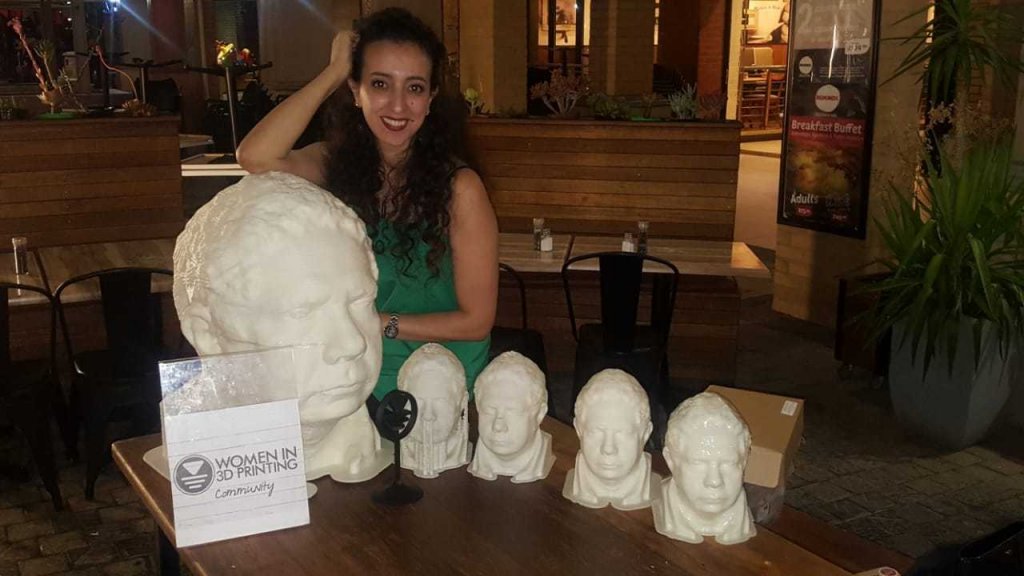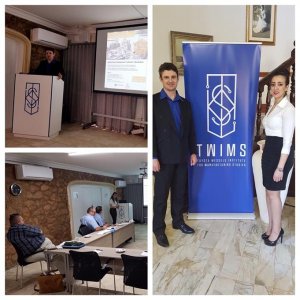Malika Khodja
Malika Khodja talks about the importance of women in 3D printing and what has to be done to promote women in 3D printing in Africa. Malika is a founder of Tiziri Advanced Manufacturing Technologies and a former CSIR researcher and PhD. Through Tiziri, Malika gives 3D printing training and offers consultancy in South Africa.
Can you tell us about your involvement in 3D printing and additive manufacturing?
I obtained my undergraduate and Master’s degrees in Mechanical Engineering at the University of Djillali Liabes, Faculty of Technology of Sidi Bel Abbes in Algeria. My background is aerostructures engineering and mechanics of materials, where my Ph.D. project involved numerical simulation and modeling of aircraft crack repair with composite patches. To validate the numerical simulations experimentally, I went to the Council for Scientific and Industrial Research (CSIR) in South Africa in 2015. I was introduced to 3D metal printing at the National Laser Centre (NLC) at the CSIR.
My 1st experience was to witness 3D printing of Ti-6Al-4V at the NLC while I was completing my research projects.
Additive Manufacturing is still new to some, and while you may have a few champions who push to incorporate it, the benefits may be somewhat unknown by your entire team. We naturally tend to reject or push away that which is unknown. Our goal with AM training is to help customers get through that early adoption phase efficiently. We are also here to help teach AM best practices and processes and improve employee engagement.
What can you consider to be your greatest achievement or contribution in the 3D Printing sector so far?
Malika Khodja with 3D printed models
This is tough to choose just one. It’s a close race between launching a successful business in advanced manufacturing with a focus on 3D printing and receiving a special recognition award at the “African Advanced Manufacturing and Composites Show” in Port Elizabeth. I was recognized in the Category for “Scholarly Impact in Advanced Manufacturing”.
I believe I am contributing to the 3D printing sector with my involvement in R&D with universities and TiziriTech’s mandate as an engineering services firm offering to consult and training for additive manufacturing. Our training program was designed to assist organizations with the integration of AM into facilities, products, and design thinking. It was built to effectively reach both small and large groups, across multiple locations, and with varying experience levels.
My main mission is to create awareness of additive manufacturing in Africa. Also, it is important to show the local manufacturing industry the advantages of various 3D printing processes and applications where it can be used to give them a competitive advantage.
As a member of the Women In 3D Printing organization, tell us about the significance of the organization in promoting 3D Printing and Additive manufacturing?
The manufacturing industry is traditionally male-dominated and as a young woman in this industry, some people tend to challenge your knowledge and practical experience. The best bit about being a woman in 3D printing is participating in our global Wi3DP community and hosting our Happy Hours in South Africa! It’s been such a joy getting to know others in the field.
With a mission of ‘Promoting, supporting, and inspiring women using Additive Manufacturing technologies,’ Women in 3D Printing seeks to foster a more diverse industry. By featuring women shaping our industry, we hope to encourage more women to join the industry. Each week, we are highlighting a woman who contributes to our industry.
While working on shattering the gender glass ceiling, we realize that to be truly successful in our mission, we need to address diversity in its broader sense. Our web-magazine also features a semi-annual report, the #DfAM, standing for Diversity for Additive Manufacturing. This report is provided as a resource for understanding the shape and scope of diversity in the 3D printing industry. In addition to our web activities, the WI3DP organization is building a strong network of global events, thanks to the support of local ambassadors across the globe.
From personal experience, I feel I’ve faced more challenges being a woman in business versus being a woman in 3D printing in particular. There have been instances where I’ve been ignored or rebuffed in a meeting. As the local Ambassador, I am proud to play a role to fulfill the Women In 3D Printing mandate within South Africa, to engage and encourage women in Industry 4.0.
The Tiziri Tech team presenting the Barnes Group Advisors TGBA training at TWIMS in Durban
How do you see women benefiting from 3D Printing especially in Africa?
3D printing is an essential part of Industry 4.0. The growth from being initially used mostly for rapid prototyping to now producing functional components has been an important development, especially in various metals. I would like to see this technology evolve to be used more in developing countries, especially in Africa which is my home continent. For metal 3D printing to be adopted more widely, better education and exposure towards the technology is needed. Accessibility to post-processing technologies such as hot isostatic pressing (HIP) is needed in developing countries as well.
Women must be made aware that 3D printing offers an exciting career within Industry 4.0. They need to be exposed to technology before arriving at University, preferably during high school already. More specifically in Africa, some female students are registered at South African universities who are doing post-graduate studies in additive manufacturing, so the future looks bright. Getting more women involved in my country of birth (Algeria) and the surrounding countries in North Africa is something close to my heart. This can be achieved through knowledge transfer and mentoring and awareness. I want to set up a training center with relevant technology in my home university in Sidi Bel Abbes and try to secure funding for a 3D metal printer to be available for academia and industry. Female students will be encouraged to utilize the equipment.
The post Interview with Malika Khodja on Women in 3D Printing appeared first on 3DPrint.com | The Voice of 3D Printing / Additive Manufacturing.





16 Replies to “Interview with Malika Khodja on Women in 3D Printing”
Comments are closed.